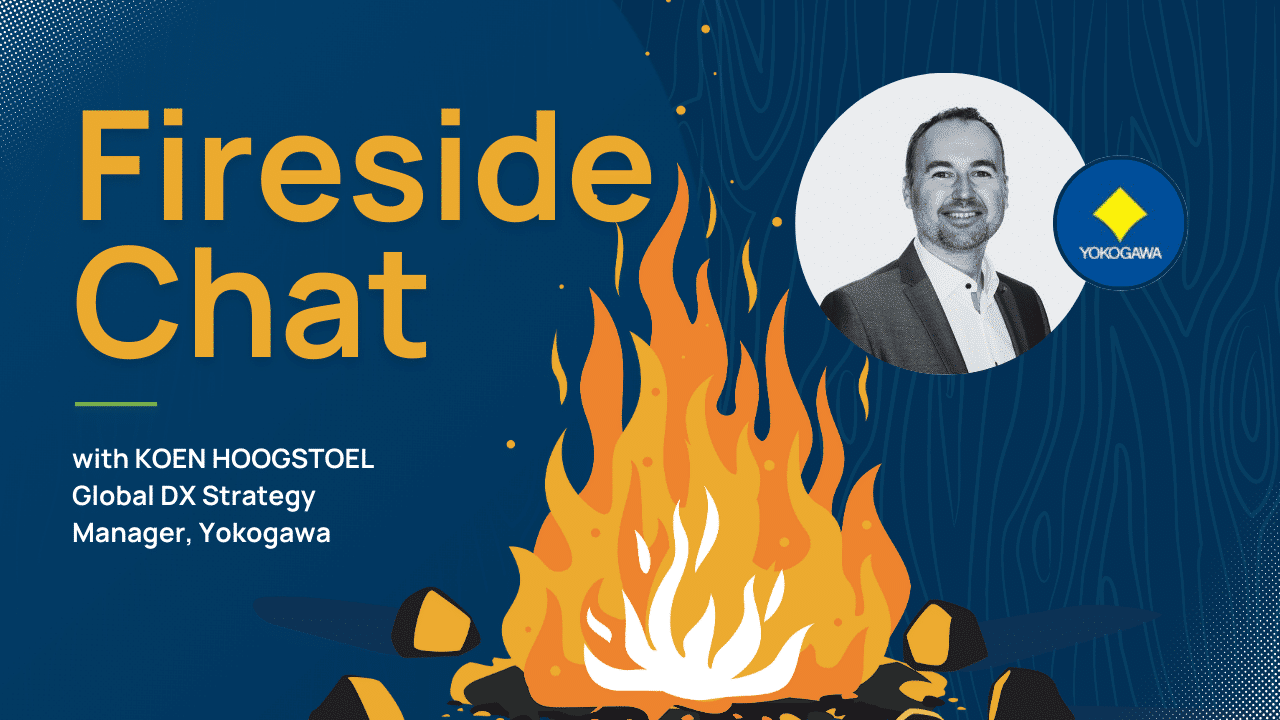
In this Fireside Chat from Vendavo’s Growth + Profitability Summit 2023 in Stockholm, Chris Kennedy-Sloane, Business Consultant at Vendavo, talks with Koen Hoogstoel, Global DX Strategy Manager at Yokogawa, about his advice for adding AI to pricing processes, the ways AI can improve business operations, and the importance of knowing whether you can use the data, if it’s reliable, the steps you need to take to verify the data, and what you want to achieve with it.
Chris Kennedy-Sloane: Hi, I’m Chris Kennedy-Sloane and I’m here with Koen Hoogstoel and we’re here at Vendavo’s Growth + Profitability Summit in sunny Stockholm, impressively. So, Koen, you’re going to be one of our panelists on our Innovation in Pricing panel. What advice could you give for people who are looking to include AI in their pricing practices?
Koen Hoogstoel: Good question. AI, you see that it’s everywhere. You see the ChatGPT jumping up everywhere, you see Google approaching, and you see Microsoft approaching. But if you want to include that into pricing, I think there are a couple of steps that you have to take into account. Now our company, we also use AI, for example, for helping our customers and it always starts with data.
Kennedy-Sloane: Mmhmm, mmhmm.
Hoogstoel: Data is the first thing, the first source of it. Where does it come from? And probably the data is everywhere. But still, it is sometimes very difficult to achieve it. Sometimes it’s even not possible to achieve it. You have separate rules and every region, like touch GDPR in Europe. There are many other regions where you have to be very careful of: Can we use the data and is the data reliable? That’s the first thing. The second thing, of course, is then what do you want to achieve with that data? Improve profitability or improve volume, improve customer experience – those are all things what you have to take into account. At the end, a big question is, will you just let the engine run on the data, or will you have somebody to intervene? Do you have the people to know what the data or what the result is? So do we look at just the engine and then let it go on all the data and then throw it at us and say, this is what you have to do. Absolutely not. So those are things we take into account.
Kennedy-Sloane: Do you trust the machine, right?
Hoogstoel: Absolutely. And when will it replace the people? That’s the other thing, but that is on the panel discussion for tomorrow as well.
Kennedy-Sloane: Absolutely. So, Koen, you’re a pricing leader at Yokogawa. What would you say your biggest pricing challenge is at Yokogawa over the next year?
Hoogstoel: Pricing leader is a big word, but at least we struggle like everybody else, otherwise we would not have such a conference like here – and we hear it everywhere. It’s extremely difficult. You just do not have one screw which you can turn around and then everything is solved. And of course, the regions are different. That is what we deal with. So, every region, whether you talk about Russia, China, America, North, South, there are even differences. You have South Korea, you have Europe. They all have a different approach. They all have different list prices.
Kennedy-Sloane: Mmhmm, mmhmm.
Hoogstoel: Do we have a visibility on those list prices? Do we tweak them? Can we, for example, say, well, we have a global list price, and if we turn it up with 5%, what will be the effect on that list price in a region? Those are things what we currently struggle with and that we will solve eventually by having the full overview. That will also be a big benefit for our products marketing people who now think, “okay, I’m the master of the product, so I’m also the master of the prices,” but that is absolutely not correct. So sales is jumping in. So yeah, what do you want to throw at us? That is definitely not what we want to have, and so it’s with having a pricing team installed we will be able to guide sales, but also guide the product management people to say, well, maybe we should tweak the prices in U.S. a bit more than in Europe, and those kinds of things. So price suggestions will then jump in as well. That’s the other step.
Kennedy-Sloane: Interesting times. Okay.
Hoogstoel: Yeah.
Kennedy-Sloane: Yeah. So, what trends do you see in the market that really impacting the pricing strategies you’re using?
Hoogstoel: A lot of trends. What we have seen lately is typically, like any other company, they say, “Yeah, let’s increase our price’s list price with 2% to 3% per year.
Kennedy-Sloane: Mmhmm.
Hoogstoel: Of course, we have seen the big jump in 2020-21 with the COVID-19 and everything increased, inflation went up, and suddenly we say, “Hey, we even increased by 10%,” and everybody was happy because our competitors also increased with 10%. And that pointed out [this question]: Can you trust the historical data? No, absolutely not. Coming back to AI, that is something that could help us out. I suppose we can link external influences because it’s known there are companies who are doing price investigations and market analysis surveys. If you can link that into kind of a model, where you say “Well, I foresee that in upcoming years, the inflation will go up with 5% in that typical industry, or there will be new investments in those kinds of industries because all the data is known,” and you use this as a feedback to your pricing engine. Then you’re there. Then you link the outside data, which is out there to your internal pricing data. And then you can say, “well, we know from Survey ABC that in the U. S. for a particular product, the prices will increase. Or the investment will increase, so the need will be higher, so we can increase the pricing.”
Kennedy-Sloane: I think there’s going to be more and more leveraging of that kind of thing, right?
Hoogstoel: Yeah, absolutely.
Kennedy-Sloane: Koen, thank you so much for your perspective and for joining us here for this Fireside Chat.
Hoogstoel: Thank you very much for the opportunity. Thank you.
